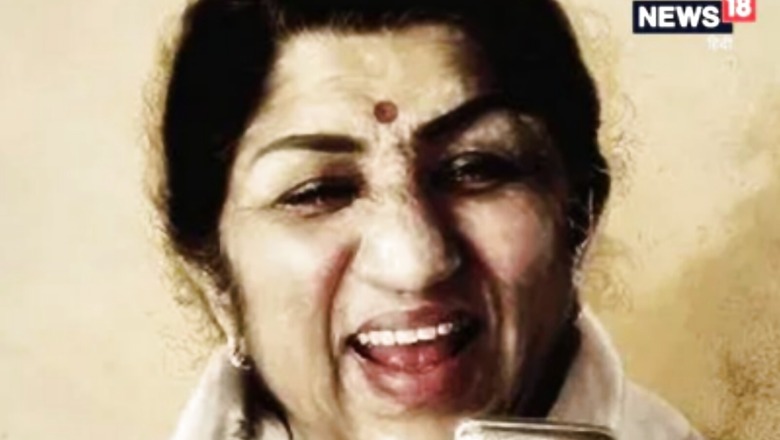
views
In the last few days, political leaders have given us their idea of India. One has described it as a Union of States, another has called it a country forever in opposition to the rootless rich in their palaces. But for the rest of us, it is Lata Mangeshkar’s India. So deeply embedded is her voice in the collective consciousness that it has taken her passing to remind us how much we had taken her for granted. A woman who started singing in the year of the Quit India movement so her family could survive and whose voice has continued to echo in our heart 80 years on. Cutting across age, geography, class, her song has had us in her thrall.
And indeed, that is the power of India. Its people are so much more than their politicians. In the official and often officious history of India, we tend to forget the heroes and heroines of civil society. Lata Mangeshkar’s voice, Sachin Tendulkar’s batting, Dilip Kumar’s acting, Birju Maharaj’s Kathak, Ustad Bismillah Khan’s shehnai, the list of what unites us is long. This is India where the pauper and the prince can feel equal sorrow at the passing of an icon who entertained them for generations. As director Rakeysh Omprakash Mehra said so beautifully, Lata was a citizen of the earth and her voice belonged to humanity.
What made her so special? It was her talent, hard work, and her consistency. But there were other things as well. She represented the model working woman, unmarried, dedicated to her family, handing over her earnings to “mai” (her mother) so she could run the household. There was no romantic involvement in the public eye that seemingly distracted her from her higher purpose. She embodied the migrant in all of us, moving to Mumbai to work, living in a small two-room chawl, before buying the first floor Peddar Road flat where she lived till her last day. It is the middle class Indian dream. Buying a house in the city of your dreams and staying in it forever, even if fortunes rise and fall, work comes and goes, and appreciation rises and wanes.
But mostly Lata’s India is the India of our diversity. Here was a woman who sang in 36 languages, who learnt Hindi, English and Urdu even though she was not formally educated, who sang for heroines of all backgrounds and ethnicities, and who was trained as much by Muslim gurus as Hindu musicians. “We lived like brothers and sisters,” she said of men like Kishore Kumar, Mukesh and Mohammed Rafi with whom she sang romantic duets. No one looked at religion, caste or class. Bollywood celebrated talent, no matter the faith.
But Lata was not merely Bollywood; Lata was all of us. She was the cab driver who listened to her on long drives. She was the diasporic Indian whose eyes would fill with longing for home, she was the ageing homemaker remembering the girl who would write down the lyrics of every song in her notebook, she was the young man listening to the duet that captured his early romance. Rekha as she walked with Amitabh Bachchan in misty, water-coloured mornings; Madhubala as she shook the unshockable Ashok Kumar; Nargis as she quenched the thirst of a weary stranger, and Madhuri Dixit as she played naughty and nice with Salman Khan.
ALSO READ | Cricket Fan Lata Mangeshkar Had Signed Photo of Bradman, Was Friends with Gavaskar, Tendulkar
She was the pristine voice of a new country buffeted by a strange enemy, the echo of an old civilisation yearning to break free, and a newly modernising country traipsing in foreign lands. Sometimes it takes a divine voice to lift one out of a defeated slumber, at other times that voice transports you to a spiritual plane.
The British have their Queen, whose 70th year of accession they celebrate this year. The French have their Edith Piaf and her La vie en rose. The Americans have their Statue of Liberty and her succour for the “huddled masses yearning to breathe free”. Every nation needs an emblem that is greater than its history and more than its geography to help define it.
Lata was, and is ours.
The author is a senior journalist and former editor of India Today magazine. The views expressed in this article are those of the author and do not represent the stand of this publication.
Read all the Latest Opinions here
















Comments
0 comment